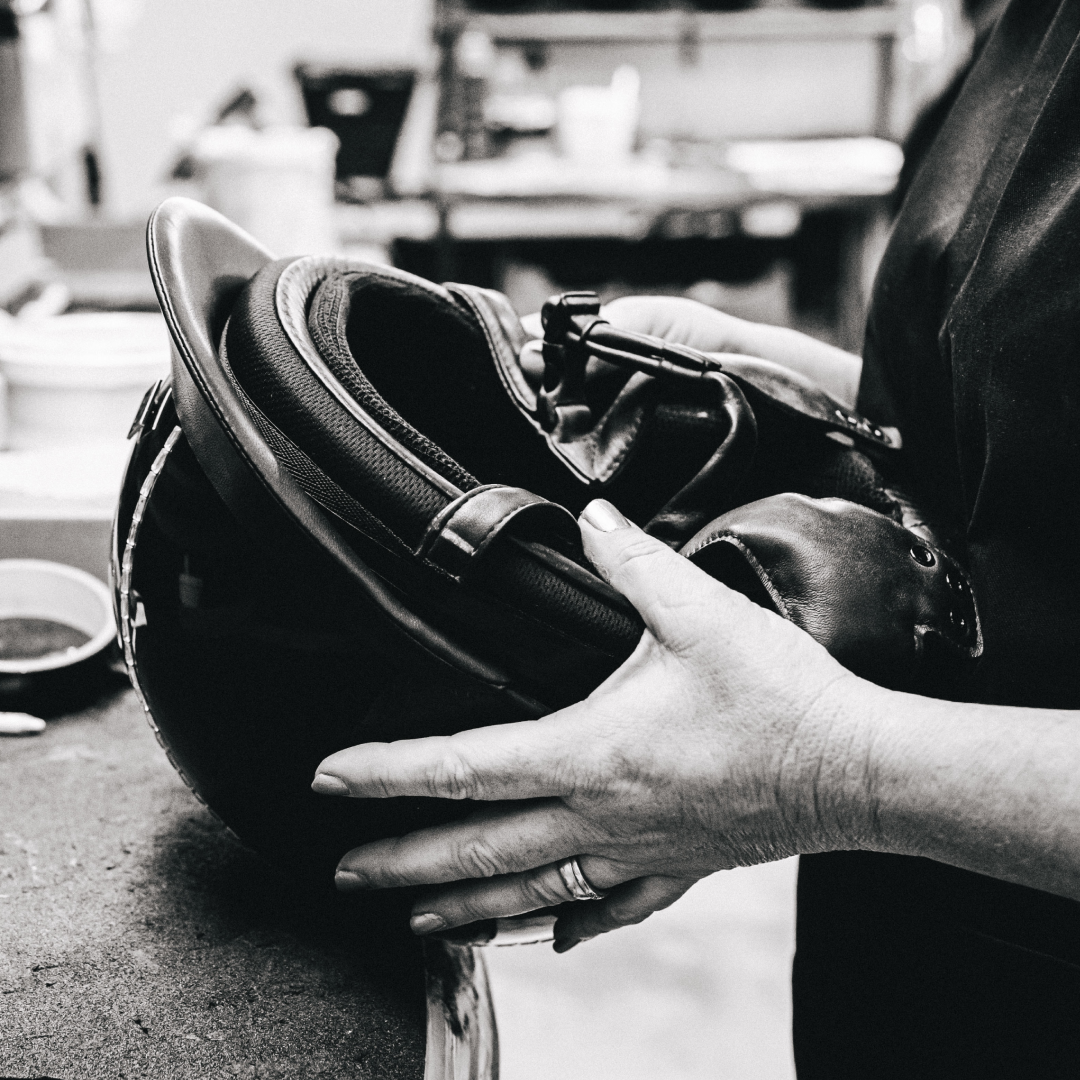
When it leaves the factory, a riding helmet offers the maximum level of protection. Over time the materials naturally degrade, even if you simply left the helmet on a shelf and never used it.
Protection is also reduced depending on how the helmet is used, cared for, stored and after any kind of impact.
How often should helmets be replaced?
The maximum useful lifespan of a riding helmet is five years, from the date of first wear, depending on frequency of use.
Even if you haven’t been in an accident with your helmet, it’s important to replace it after it expires past this time. This is due to natural wear and tear on the materials.
If your helmet suffers any kind of impact, no matter how small, its protective qualities will be compromised. You should replace your helmet before riding again.
Lastly, a riding helmet should fit snug on your head. If your helmet ever becomes too loose or too tight, it’s time for a new one.
We recommend storing your helmet in a protective helmet bag or helmet rucksack.
How to tell if your riding helmet is damaged
If you have a major fall you may notice cracks on the helmet’s outershell and it’ll be obvious that it needs replacing.
However, in most situations, the real damage will be invisible to the naked eye, whether through ageing or any impact.
It is the layer of Expanded Polystyrene (EPS) which gives you the most protection but is also the most fragile part of the helmet. This layer sits hidden between the outer shell and the inner liner.

EPS is made up of energy-absorbing beads that are full of air to form a microscopic bubblewrap. These beads burst when struck so that they can absorb and dissipate the energy of an impact to protect the skull.
Any time your helmet is impacted, the layer of EPS is compressed. It will not offer the same level of protection if it is struck again, even if there is no visual damage to the outside of the helmet.
So it is actually very hard to tell if a helmet is damaged just by looking at it without specialist equipment.
Therefore you should buy a new helmet after any impact, including dropping it on a hard surface.



